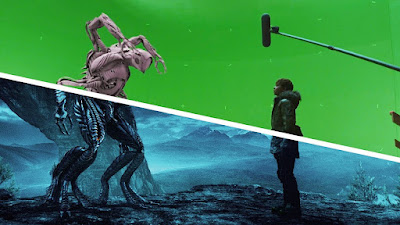VFX (Visual Effects)

VFX (VISUAL EFFECTS) It is the process by which imagery is created and manipulated outside the context of a live-action shooting. Visuals are often integral to a movie's story. Although most visual effects work is completed during design, guides and leads the teams required to achieve the desired effects. Visual effects are divided into 5 parts: Matte Painting: This technique creates highly detailed and realistic backgrounds and environments using digital painting tools. It is often used to create a sense of scale and grandeur, such as the vast landscapes in The Lord of the Rings or the expansive cityscapes in Blade Runner 2049 . Motion Capture: This technique uses cameras and sensors to capture the movement of actors, which is then used to animate computer-generated characters. It allows for the creation of realistic digital characters that move and act like real human or animal. Examples in...



